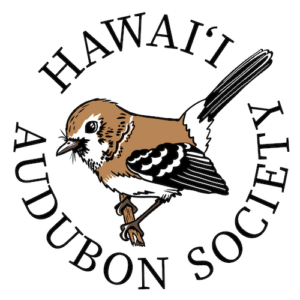Frequently Asked Questions
(FAQ)
Contact Manu-o-Kū, 808-379-7555. Also see
www.whiteterns.org/care for more information.
If you find a downed shearwater fledgling then contact appropriate facility for your island, on O’ahu or Big Island the Hawai‘i Wildlife Center (808-884-5000), on Maui, Moloka’i, or Lanai, Maui Nui Seabird Recovery (808-573-BIRD), and on Kaua‘i, Save Our Shearwaters (808-635-5117). For more information on Shearwaters and rescued bird drop-off locations click here.
NON-NATIVE NESTLING – Nestlings have few feathers and can only drag themselves on the ground. If you can find the nest, then place the nestling back in the nest or create a makeshift nest and place in the closest tree to where you found the nestling. This will provide the best chance for the parents to find the nestling.
INJURED NON-NATIVE – If the bird is injured or sick and is a non-native species, then you can contact your local humane society or find a licensed rehabilitation facility for your island at the Division of Forestry and Wildlife website.
Use this list to determine if the bird is native.
For help with identification contact Hawai’i Wildlife Center (808) 884-5000, the U.S. Fish and Wildlife Service (migratory seabirds) (808) 792-9400, or HAS.
HAS does not have facilities or resources to assist with/care for injured or sick birds and is not responsible for any injuries from people handling birds. For more information see this FAQ section.
For downed wildlife contacts for all islands, go to http://dlnr.hawaii.gov/wildlife/downed-wildlife-contact-details/
Recommendations and directions for birding sites on the various islands may be found in our new 7th edition of the Hawaii’s Birds book.
It is organized by habitat and includes photos, distributions,
descriptions, voices, and habits of all of the native and introduced birds that are regularly seen in Hawaii today.
Also, the Hawaii Birdwatching Facebook group serves as a resource for anyone interested in birdwatching and bird conservation in Hawai’i. Members (beginner birders through experienced birders) share their observations, sightings, anecdotes, questions, articles related to birding and bird conservation within the islands. You are welcome to ask questions on this Facebook page, which is independent of the Hawaii Audubon Society.
HAS does not provide recommendations for commercial Birding Guides, but there are excellent guides who provide descriptions and costs of their services online.
For assistance with bird identification questions, please refer to our Hawaii’s Birds book.
It is organized by habitat and includes photos, distributions,
descriptions, voices, and habits of all of the native and introduced birds that are regularly seen in Hawai’i today.
